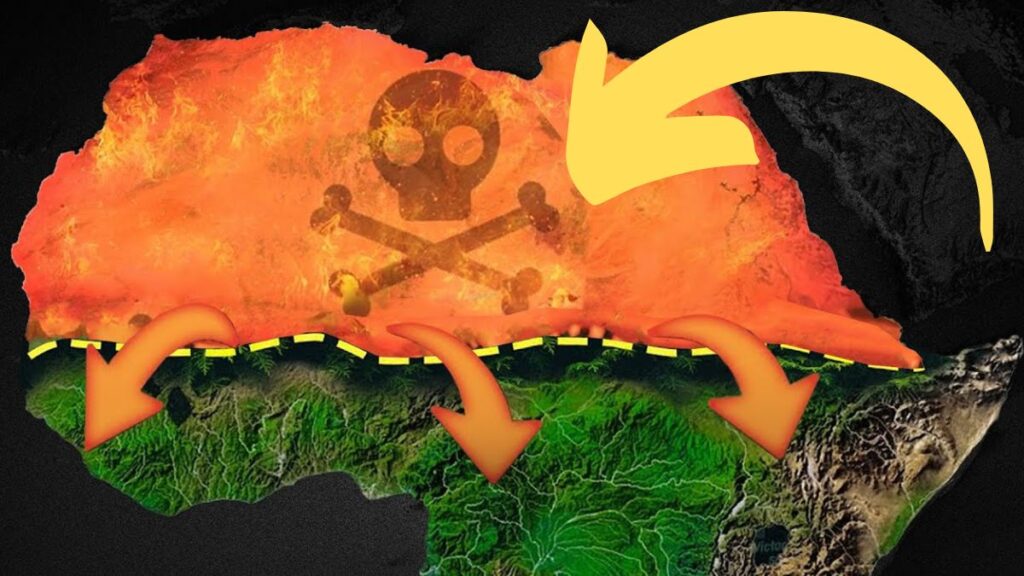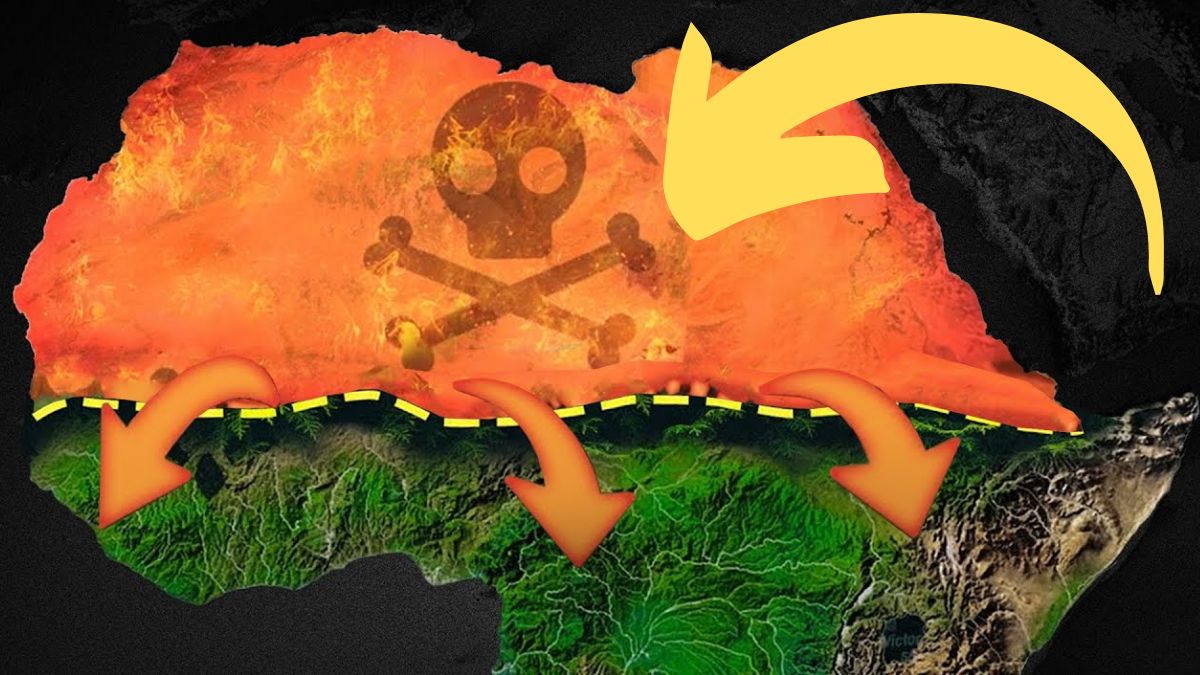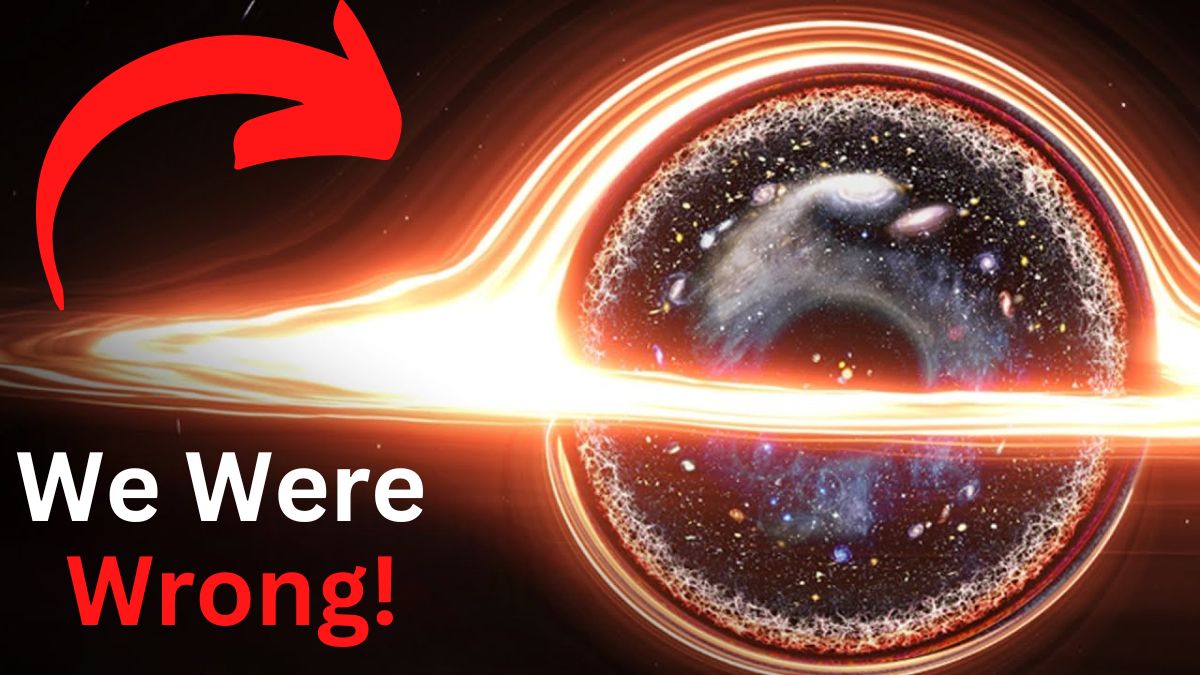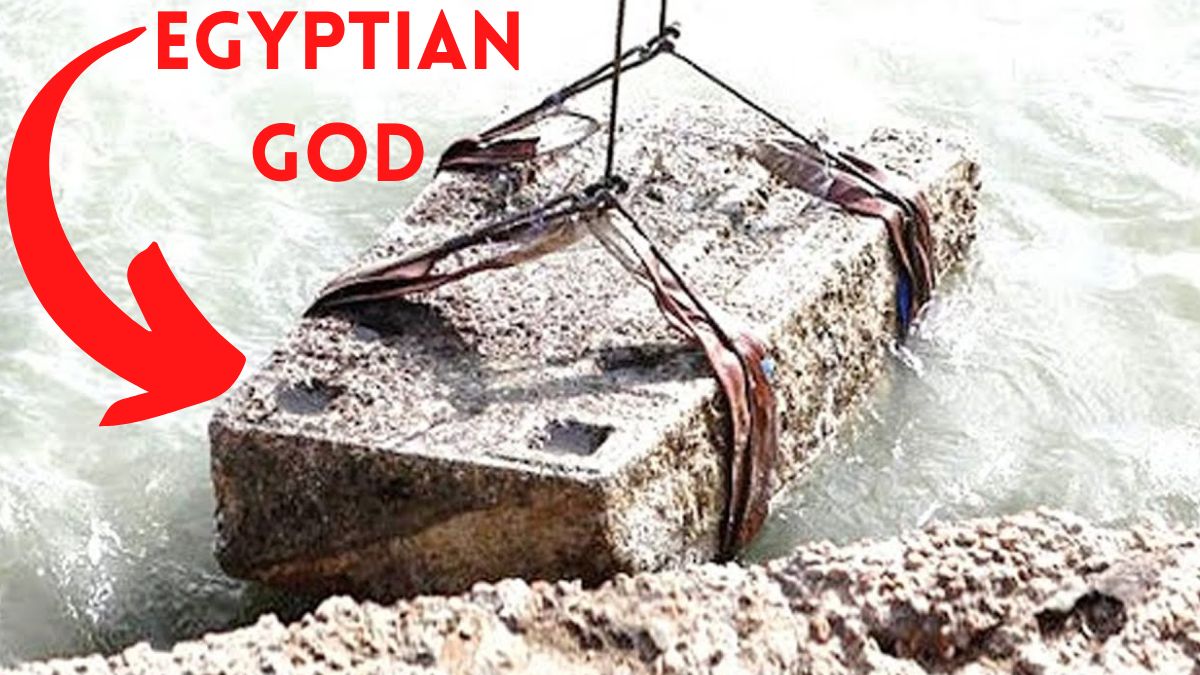
Terrifying new discoveries hidden under the Sahara have catapulted this terrain into one of the most mysterious places on this planet.
You’ve probably only heard about how hot it is or how large it is (9 million square kilometers if you’re wondering).
Sure, you may look at it and see nothing but sand and gravel and dunes, but like almost everything in this universe, its true nature hides deep below the surface.
And because people of this land have lived close to this enormity, of course the Sahara has become a treasured source and holds answers to numerous ancient secrets.
Did you know there is a lake beneath the entire desert?
It’s also the location of some truly fascinating fossil discoveries.
Join us as we unearth all of the gems discovered beneath all of that reddish-brown sand.
First up: An ancient mega lake lies beneath the desert.
Scientists have discovered evidence of a prehistoric mega lake beneath the sand of the Sahara Desert.
When the Nile River pushed through a low channel near Wadi Tushka 250,000 years ago, it flooded the Eastern Sahara, creating a lake that covered more than 42,000 square miles at its highest level.
The size of this mega lake in the Sahara Desert rose 810 feet above sea level and covered 42,000 square miles, while a smaller lake rose 623 feet above sea level and covered 18,600 square miles.
A geologist from the National Air and Space Museum, Ted Maxwell, along with his colleagues, discovered evidence of the lake while studying radar data from Egypt collected by the Space Shuttle Radar Topography Mission.
The geologists put together the profile of an ancient mega lake using images of wind-blown sediments, running water-produced sediment, and bedrock that was seen by radar beneath the desert sand.
The extreme aridity of Egypt improved the radar’s ability to detect distinct subsurface features and buried channels that could be found up to 50 feet below its surface.
Kisaba Oasis is Egypt’s southernmost oasis and is located along one of the ancient watercourses that geologists discovered using Space Shuttle topographic data.
The water is currently 6.5 to 9.5 feet beneath the surface and was very recently plowed in preparation for melon farming.
Next up: Archaeological sites were also discovered.
Scientists estimated that the Nile once flooded the entire Cassiba Tushka depression of Egypt and created the giant lake by observing fossil fish found in deposits around 250 miles west of the Nile and 810 feet above sea level.
The scientists also determined that the Paleolithic human settlements near Salima and Tafawi in Egypt correspond to a lake covering approximately 42,000 square miles.
This is because the settlements chose to stay close to near-water regions.
A different set of archaeological sites near Beer Kasaba 93 miles west of the Nile suggested a second lower level of the lake and 623 feet above sea level, which covered an area of approximately 18,600 square miles.
The geologists also calculated the size of the second lake using the elevation of the Tushka channel, which once carried Nile water into the desert.
According to the researchers, the newly discovered lakes add to the growing evidence of numerous early and middle Pleistocene lakes across North Africa that could have supported human migration patterns.
Their findings were published in the December 2010 issue of the journal Geology as “Evidence for Pleistocene lakes in the Tushka region, South Egypt.
” A fragment of a proto-planet older than Earth was discovered in the Sahara.
An incredible relic was discovered in a remote region of the Sahara desert in the spring of 2020: an ultra-rare chunk of embryonic planet that existed before Earth was born.
Can you even imagine what our solar system looked like then?
The meteorite known as ERG check 002, also known as EC002, was formed within the crust of an ancient ProtoPlanet – a small celestial body that acts as a building block for planets – according to a study published in Proceedings of the National Academy of Sciences.
The volcanic space rock is the oldest known lava that has ever fallen to Earth and provides an unprecedented glimpse of planetary formation in the early solar system.
Scientists led by Genre Alex Barratt, a geochemistry professor at the University of Western Brittany in France, jumped at the chance to examine this extraordinary time capsule from the solar system’s infancy, which belongs to the endocytic family of volcanic rocks and is unlike anything else ever seen.
The moment they heard the first descriptions of this rock, it was clear to Barrett that this find was unusual.
He and his colleagues were aware of the EC02’s potential age based on previous research on another rare and acidic meteorite described in a 2014 study.
Age wasn’t the only factor they were interested in, though.
They were intrigued by the genesis of such extraterrestrial and acidic melts and also hoped to learn the process of formation of primordial crusts.
Such samples are extremely valuable to scientists.
EC002 was named after its landing site in Algeria’s ERG check dune sea and was made up of several meteorites weighing approximately 70 pounds.
The stunning crystals were discovered in the stones in May 2020, but earthly erosion of the extraterrestrial rocks suggested they fell in the desert much earlier.
Barrett too confirmed that it wasn’t a newly fallen meteorite; it was slightly weathered, but they knew from the Tatooine meteorite study that terrestrial weathering was rapid even in the middle of the Sahara.
Baris and his colleagues were able to pinpoint when this piece of protoplasmic crust, which was partially melted as lava, crystallized into a solid form after obtaining meteorite samples, according to the study.
After analyzing the magnesium and aluminum in the rock, it was revealed that it dated back about 4.566 billion years.
This made it the oldest known piece of igneous crust ever discovered on earth, when you compare it to the next oldest igneous meteorite, NWA1119, which is about 1.24 million years younger than EC002.
And let’s not forget that Earth is newer than both, as it emerged several million years after these rocks formed.
The fragment is unusual in every way aside from its unparalleled age.
EC002 is also notable for its unusual composition.
The meteorite is 58% silicon dioxide, which indicates that its ancient parent body had a crust made of andesite rock, as opposed to basalt, which is a much more familiar material that is found in volcanically active regions of the earth.
These endocytic crusts were probably abundant in asteroids and protoplanets during the early days of the solar system, but they have become extremely scarce in the billions of years since that time.
During our solar system’s turbulent and crash-prone period, ancient protoplanets were either incorporated into larger bodies like Earth or blasted apart by collisions with other rocks.
It was chaos.
ECO2 is clearly distinguishable from all asteroid groups mainly because no object with spectral characteristics similar to ECO2 has been identified yet.
The team wrote in a study, adding that primordial cross remnants are not only rare in the meteorite record, but they’re also rare today in the asteroid belt.
So, to find evidence of one is every scientist’s dream.
One of the reasons it’s so rare to find such evidence more often is because the earliest differentiated Proto-planets that populate the solar system, as well as the majority of their debris, were either almost always destroyed or formed into rocky planets.
This made the discovery of this piece of protoplanet an exceptional occurrence.
The team believes that ECO02 was ejected from its parent body by one of these encounters only a few decades after the protoplanet’s crust cooled and crystallized, revealing incredible new details about planets evolving embryos before Earth existed.
Barrett stated that he and his colleagues, as well as other teams, are working on other studies to confirm the age of ECO02.
The crystals inside the rock, which are older than the surrounding volcanic material, are also being studied by researchers.
All of these studies will help them learn more about the composition of the magma produced during a protoplanet’s early activity, which will help scientists like Barrett deduce a lot about the formation of its crust.
Next up, the seas were home to a terrifying ancient crocodile the size of a bus.
Paleontologists searching throughout Tunisia made a massive discovery: the world’s largest sea-dwelling crocodile previously unknown to science.
This prehistoric crocodile was estimated to be more than 30 feet long and weighed somewhere around three tons.
The skull alone measured more than five feet in length, and researchers went on to name the new species Machamosaurus Rex and published their findings in the journal Cretaceous Research.
The crocodile was described as massive by lead author Federico Fanty of the University of Bologna.
According to him, it was simply enormous and almost as big as a bus, and that sounds big alright.
You also believed that the creature was definitely at the top of the food chain when it existed, or at least it was where it lived.
Fancy and his team, with the help of the National Geographic Society Committee for Research and Exploration, discovered the fossils buried beneath a few inches of sediment on the edge of the Sahara Desert into Tunisia, a country rich in fossils.
This discovery was a big surprise, not because they had discovered fossils, but because they discovered exceptionally beautiful ones.
Fancy and his team took two days to uncover the skull from its buried location, and the rest of the body was just laying there, the perfect treasure for archaeologists.
This location was most likely home to a lagoon that faced the ocean, as researchers also discovered the remains of fish and turtles which they are still trying to identify.
There may be some intriguing mysteries and answers hidden in their remains, as according to Fenty, the M.Rex was absolutely capable of hunting in the water and could have been an ambush predator or a scavenger.
Comparing M.Rex to other crocodiles with large heads and short teeth suggested that the newly discovered creature had a very incredible powerful bite force that allowed it to crush its food.
The M.Rex’s turtles would have made an excellent meal.
And this discovery is significant for reasons other than just its size, according to Fenty, because it calls into question previous theories about prehistoric life.
Rex’s crocodile group was thought to have gone extinct around 150 million years ago at the end of the Jurassic period, but this particular M.Rex lived about 130 million years ago.
And then there was the previous research that suggested a big global extinction between the Jurassic and Cretaceous periods that wiped out.
According to Phantom, Rex lived thousands of years after the hypothesized mass extinction, so that’s another theory that lost its credibility.
This led Fenty and his team to deduce that the mass extinction theory was incorrect, and that the scientific world needs to better understand what happened at the end of the Jurassic period.
And now, at fossils of a strange animal in the Sahara of Courts, scientists’ attention has been drawn to Egyptian scientists who discovered the fossil of a four-legged whale.
We regret to inform you that your nightmares are about to become even more intense.
A team led by Egyptian scientists discovered a 43-million-year-old fossil of a now extinct amphibious four-legged whale in the Egypt Sahara Desert.
Yes, you heard that correctly: a whale with legs.
According to the study’s authors, this creature had unique skull features, and its mandible suggests a capacity for more efficient oral mechanical processing.
These walking whales, in other words, had a strong raptorial feeding style.
One of the scientists was eager to share his perspective; Abdullah Gohar revealed that the creature was likely fierce and lethal, with the capacity to kill.
In other words, this whale could bring Armageddon upon its prey.
Scientists named the new whale “fiomycetus nubis” after Anubis, the canine-headed Egyptian god associated with mummification in the afterlife.
It was most likely a top predator at the time, much like a killer whale is today.
Whales were once herbivorous, deer-like terrestrial mammals, according to scientists.
Wales evolved into carnivorous creatures in the ocean over about 10 million years.
The discovery of this four-legged creature is a step in that evolutionary process.
So a whale with legs and a massive head that eats viciously?
Good luck getting to sleep tonight!
The desert carries a rich history and terrain, and we love that this terrifying discovery has suddenly dragged the Sahara Desert into the spotlight.
There’s a lot that folks don’t know.
If you visit the southern part of Africa, you will be surrounded by lush vegetation, rainforests, and jungles.
However, the northern part of the African continent has a completely different environment and climate: a region that has been ravaged and turned into a desert.
These distinctions are significant.
So vast is the Sahara Desert in Northern Africa that it can swallow Spain 18 times over.
That is huge!
It is so large that it encompasses one third of the African continent.
The desert also has a large number of dunes, which cover about 15 percent of the Sahara Desert.
Mountains, plateaus, sand and gravel covered plains, salt flats, and other topographical features are also present.
According to scientists, this vast desert was not a desert thousands of years ago, but rather a vast rainforest.
So, what happened to cause such a drastic change?
One reason the Sahara Desert became a desert was that farmers in the area overgrazed grasses in cattle grazing areas.
This resulted in less moisture in the region over time because the vegetation that held moisture in this region was eaten up by animals and these nomadic humans.
In this region, they may have used fire as a land management tool, which may have accelerated the pace of events in the region.
So what else did they discover in the Sahara desert?
Within this region, they discovered many interesting artifacts, bones, and other items.
They dug up whale bones that are thought to be millions of years old.
It’s fascinating to see how the animals in the area evolved.
They were land mammals that became aquatic as they moved into the water, and as the water level dropped and the desert formed, they could no longer sustain their aquatic lifestyle.
Or maybe the relationship between the lost city of Atlantis and the Sahara will pique your interest.
There is a link between the Sahara Desert and the lost city of Atlantis, believe it or not.
This leads us to what is known as the ‘eye of the Sahara’, which is a literal magic Bullseye.
The Sahara’s ‘eyes’, also known as the ‘Guelbert Reshet’, are a massive Bullseye represented by this ancient archaeological marking in the Sahara Desert.
It covers a 40 kilometer stretch of desert.
Only a few local tribes were aware of the formation for centuries.
The Gemini astronauts were the first to photograph it back in the 1960s.
It served as a landmark for them to track the progress of their landing sequences.
Later, another satellite photographed it and provided data on its size, height, and extent.
It was thought that the ‘eye of the Sahara’ was formed by an impact from space, something slamming into the Earth’s surface.
However, after studying the rock inside the structure, they discovered that this geologic dome is earth-based.
According to legend, the rock is 100 million years old, and the layers in the rock have been used to measure a lot and it contains many different types of stones.
There is another explanation for the Sahara.
For the longest time, people have been looking for Atlantis, something that has vanished from society.
Many people have searched the ocean and believe it is completely submerged.
However, one YouTuber believes that the ‘eye of the Sahara’ is the same size and shape as Plato’s Atlantis.
The mountains, rivers, and other archaeological features of the region appear to correspond with the ancient city of Atlantis.
It also corresponds to the date when the city of Atlantis was said to have vanished.
Numerous mysterious correlations apply it to the ‘eye of the Sahara’.
Interestingly, clay pottery was also discovered in the area.
The Egyptians, who lived along the Nile, did not use these objects.
This was clay used by another nearby culture, so much remains to be discovered in the region.
What are your thoughts when it comes to the vast (albeit mysterious) Sahara Desert?
There are many unanswered questions.
Maybe there are more strange creatures waiting to be discovered.
A bulldog-faced dinosaur has been discovered in the Sahara Desert.
A spectacular crested dinosaur with a massive sail, discovered in the Sahara, resembled a giant bulldog according to scientists.
The terrifying Cretaceous Period carnivore was 20 feet long and weighed three tons.
It was the size of a school bus and was most likely the top predator in its territory.
The unnamed theropod is a belly saw and a cousin of the dreaded Tyrannosaurus Rex.
The 98 million year old neckbone fossil was discovered by scientists at the Barrio Oasis, about 180 miles Southwest of Cairo.
This location would have been one of the most terrifying places on the planet at the time, according to lead author Bilal Salem, a new graduate student in the biological sciences program at Ohio University.
The dinosaur was described by researchers as bulldog-faced, with small, razor-sharp teeth.
It had stubby arms, like its T-Rex cousin, but its massive claws made it even more dangerous.
They believe it was a vicious killer with a razor-sharp bite, a keen sense of smell, and incredible speed.
It even went after a Spinosaurus, who famously defeated T-Rex in Jurassic Park 3.
It lived near a river that ran through the Sahara and was lined with mangrove-like trees.
The spinal sail, which was formed by elongated vertebrae connected by a membrane, was its most striking feature.
But what did they learn from the discovery?
A series of flat bones beneath the skin reached a length of six feet.
They were surrounded by a web of fine veins.
The blood pumped through them, coloring the sail.
It could have changed color to attract a mate, frighten an enemy, or regulate body temperature by absorbing heat.
Salem further explained the origins of the creature discovered in a university press release.
He mentioned how belly saudis were extremely diverse, well one of the most dreaded predators in the Cretaceous Period.
Now, the discovery of this dinosaur just allows them to add another predator to their catalog.
Spinosaurus and two other giant theropods, Carcarcharodontosaurus and Bahariosaurus, can now welcome the belly sword fossil to their party.
Abelisaurids were a group of apex predators that lived in what is now South America, India, and Africa.
Scientists believe they preyed on some of the largest dinosaurs, such as the titanosaur, a 70-ton herbivore the size of a blue whale.
The discovery also demonstrates the trans-Saharan Seaway, a warm and shallow ocean that once covered the Sahara desert, did not affect their migration.
The discovery of the new dinosaur demonstrates the extensive geographic range of belly swords in North Africa, as well as the exceptional diversity of large-bodied dinosaurs from Egypt.
According to Salem, this dinosaur group appears to have stretched across most or all of Northern Africa during the late Cretaceous Period.
It implies the trans-Aryan Seaway was not a significant barrier to the spread of large-bodied theropods during the period.
The Bahariya formation has yielded numerous non-avian theropod dinosaur fossils, including Spinosaurus aegyptiacus, Carcharodontosaurus saharicus, Bahariosaurus ingans, and Delta dromius agilis.
Interestingly, several of these taxa, including Spinosaurus, Carcarcharodontosaurus, Bahariosaurus, and Delta dromius, grew to be as enormous as Tyrannosaurus Rex.
According to Salem, the new belly sawid verifies the presence of a fourth medium-sized to large theropod taxon in the Bahariya formation paleo ecosystem, despite plainly referring to a much smaller bodied species.
Next up is a research published in the Royal Society Journal of Open Science.
According to researchers, a stone discovered in the Sahara Desert is the first proof of the universe’s most energetic event: a supernova type 1A explosion, a type of star explosion that is one of the most energetic events in the universe.
According to researchers from the University of Johannesburg, the researchers pieced together a timeline of Hypatia’s origin dating back to the early stages of the formation of the Earth, the Sun, and the other planets in our solar system after discovering a series of highly unusual clues in the chemical composition of a small fragment of the stone.
Their theory is that the birth of Hypatia can be traced back to when a red giant star, a dying star, collapsed into a white dwarf star, a star with medium to high mass.
Following the collapse of a massive dust cloud nebula, the white dwarf star found itself in a binary system with another star orbiting a common center of mass.
The hungry white dwarf star eventually ate the other star and exploded, resulting in a supernova type 1ax explosion inside the nebula.
Once the cooling process was complete, gas atoms from the supernova type 1A explosion began to stick to nebula particles, resulting in the formation of Hypatia’s parent rock.
It then began hurtling towards our planet at some point, but the heat of entry into Earth’s atmosphere combined with the pressure of impact in Egypt’s great sense c shattered Hypatia’s parent rock.
Somehow, over the past centuries, the Sahara Desert has collected treasures from all over the world and even from our own.




![“[God DNA] Proves Presence of God” says Scientists God DNA](https://spaceupper.com/wp-content/uploads/2021/10/God-DNA.jpg)


![Moon Jellyfish has [ Hidden Secrets ] You don't know moon jellyfish](https://spaceupper.com/wp-content/uploads/2022/11/1-1.jpg)